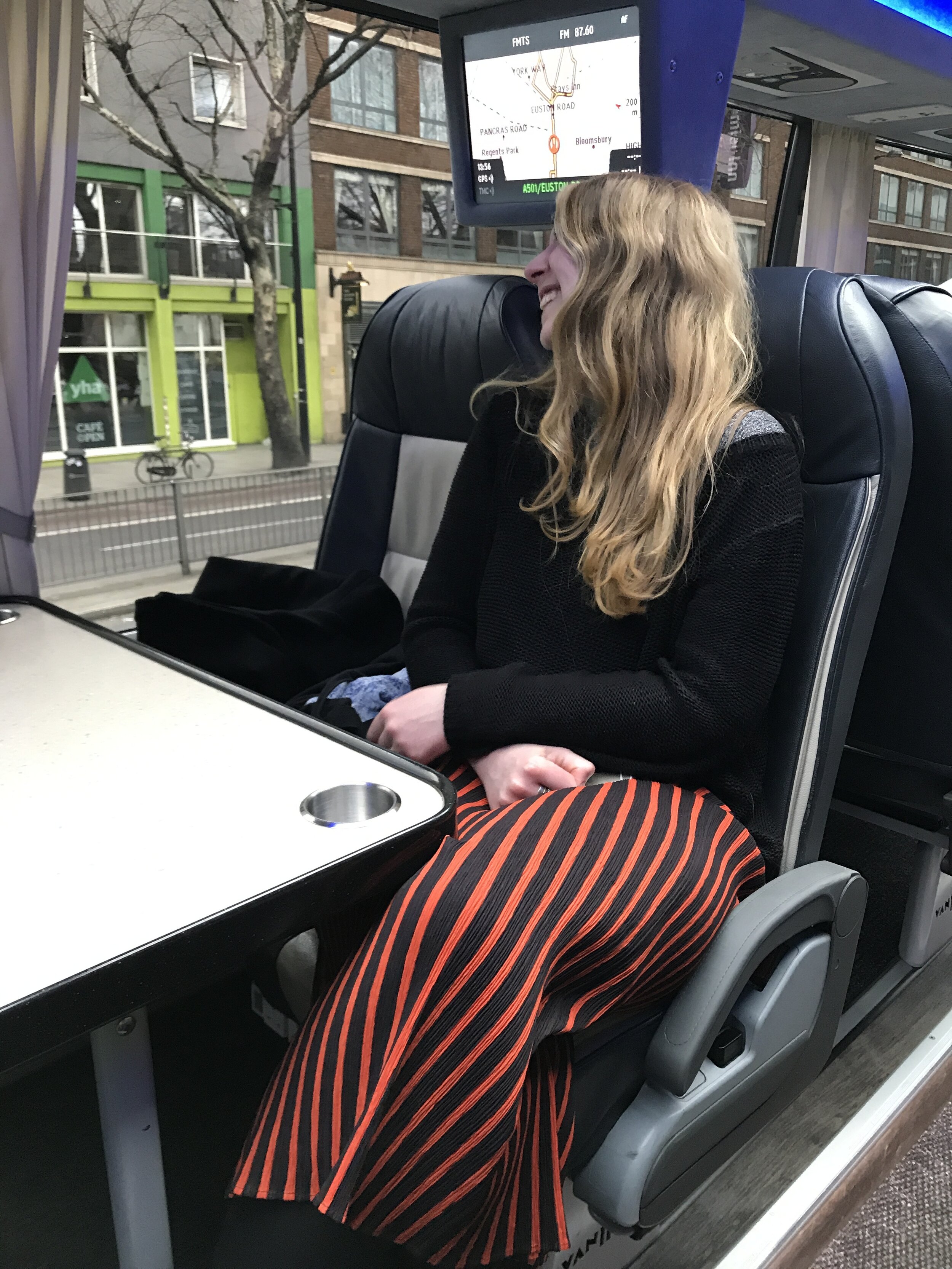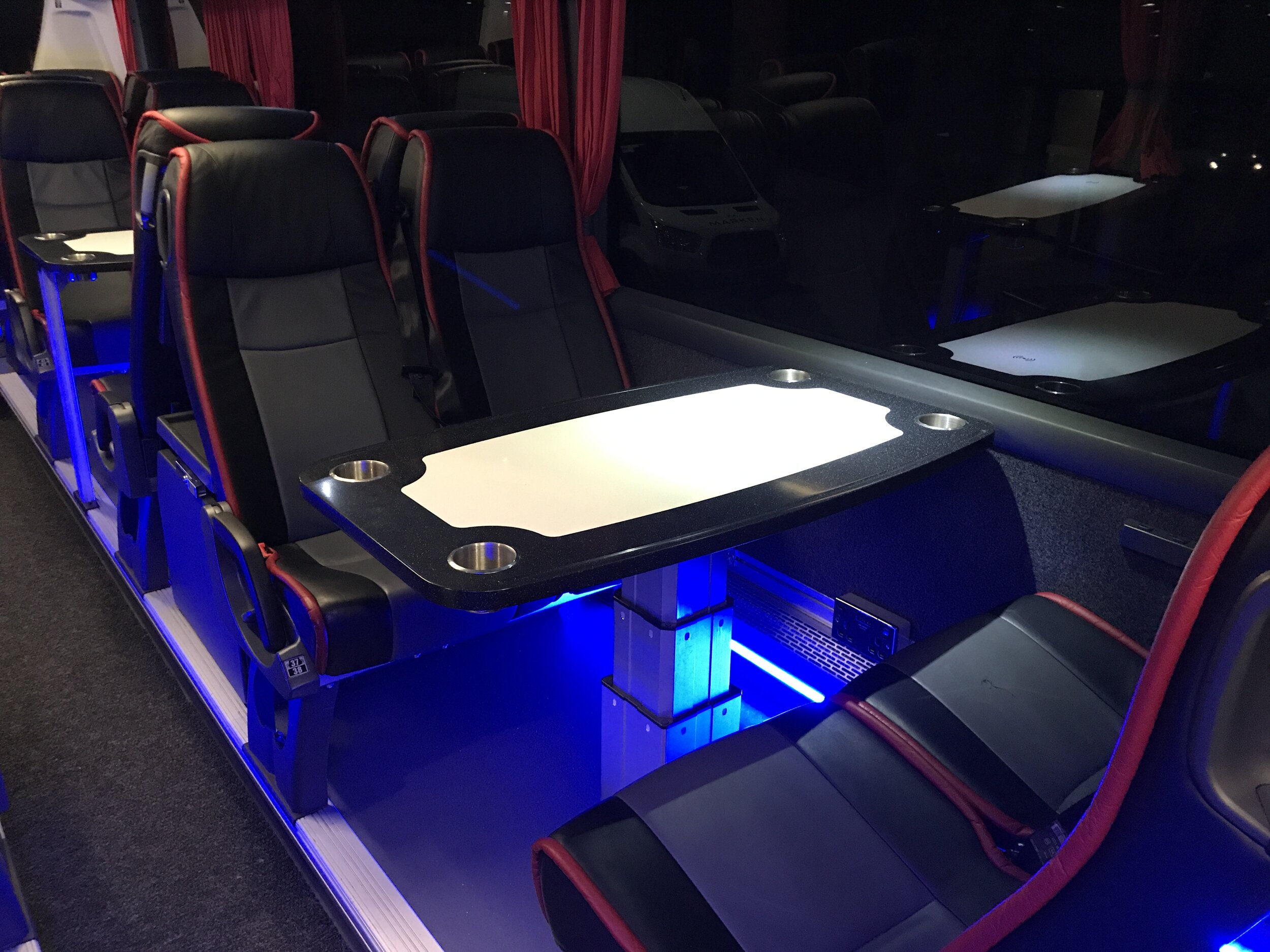The Potential for Coaches
One of thousands of Snap customers I met over the last five years; travelling on a superbly comfortable coach
When I founded Snap, one of my motivations was to unlock all the untapped potential for coaches.
I haven’t succeeded, but the potential still exists.
Coaches are a uniquely flexible form of transport. Around 30,000 exist in the UK, owned and operated by around 1,000 individual firms.
They are spread around the country, can go anywhere and are cheap.
They don’t come close to fulfilling their potential.
Coach potential
The reasons we should use coaches more are significant.
Carbon Coach travel offers the lowest carbon footprint of any motorised transportation. Only walking and cycling generate fewer greenhouse gas emissions, and these aren’t much good for going long distances. Coaches are low carbon footprint because years of emissions regulation has made their engines carbon-efficient and because they’re relatively small. 30 people in a 50 seat coach is much more efficient than 30 people in a 200 seat train
First mile / last mile There is constant discussion of the first mile / last mile problem, but it’s always presented as a question of how to connect people to the hub. But what if you take the transport to the people? Snap was never going to pick you up at your house, but as we scaled up we were able to connect more and more local areas to each other. Even at our relatively early stage, we could connect not just central Bristol to London, but Clifton, Stokes Croft, Stoke Bishop, Bedminster and Southville. As more people used the service, more places were added in. That flexibility is unique to coach as a form of transport.
Price and profitability Coach is a form of transport that makes money. Moreover it does so at the moment, even when perceptions of quality keep coach prices anchored to a low level. Imagine how profitable coach could be if prices were even slightly higher. This is relevant as coach is one of the few bits of the public transport industry to wash its face commercially. Perversely, it also means it gets almost no help from Government. And yet with a bit more policy help, many more people could travel by coach, removing themselves from forms of transport that require Government cash.
Low capital investment Coach is the only truly private sector bit of the transport industry. By that I mean that coach services are provided by competing private businesses and if the business goes bust, no-one steps in to save the service. This has the advantage that coaches themselves are provided for ‘free’ - without any requirement for capital investment either directly or by proxy (e.g. rail vehicles don’t sit on the Government’s balance sheet, but they’re still paid for by the Government). As we go into another era of a Chancellor trying to balance the books, a form of transport that’s free to the Exchequer isn’t one to ignore.
Coach issues
But it’s not all plain sailing. Here are the issues (and how we attempted to solve them at Snap):
Coaches as commodities Coaches tend to be treated as interchangeable, which eliminates the incentives on operators to offer quality. Consumers will often book via coach brokers who select purely on the basis of price, while local authorities and rail companies (big coach company purchasers) will also tend to select the cheapest bid. A coach journey can be the most comfortable and relaxing form of travel that exists but you can also have some truly awful experiences. I won’t embarrass the operator by naming them, but this photo shows a coach that was once sent on a Snap trip:
The interior stank to high heaven of mould. Thankfully I was out on the network that day and intercepted this one but the point is that there literally isn’t a train this nasty in the country.
The way we attempted to deal with this at Snap was using star ratings, and it worked. But star ratings are not yet common-place in the coach buying market, which means this problem will continue for a while longer.
Slowcoach It’s a real shame that phrase came into existence! It does rather highlight one of the key problems with coaches - they are not very fast. However, they’re made slower than they need to be as a result of outdated regulation. Coaches are unrecognisable from the days in which it was first decided that they should be limited to 60mph and banned from the fast lanes of motorways. Indeed, given that coaches are safer than cars, greener than cars and more efficient than cars, there’s a much better argument for enabling coaches to go 10mph faster, not slower. That’s a lobbying effort I’d have liked to have joined the pandemic hadn’t got in the way.
But the other thing is much more significant. Coaches are only slow in comparison with trains or cars because they don’t offer any advantages. A coach from Victoria Coach Station to Bristol Bus Station has all the disadvantages of the train in requiring a first mile / last mile solution (actually more like first/last 5 miles) but going at the same speed as a car.
This is where road pricing and smart motorways together have the ability to transform things. When road pricing is - eventually - introduced, it makes sense for a lane on the motorway to be priced at the level that ensures free-flowing traffic. Given coach’s carbon credentials, it also makes sense for coaches to be able to use this lane. Suddenly, the position of coach is transformed.
Now, I realise this outcome is not guaranteed. But, equally, it’s much more likely to happen if the coach industry asks for it. That’s the long-term conversation I was starting to have when we were thumped by Covid.
“Coaches are [insert criticism here]” The problem I never succeeded in solving was peoples’ overall negative impression oof coaches overall. Yes, coaches could be terrible. But, equally, coaches could be superb. We always made a point of running a handful of football team coaches on the Snap network, just so customers got to experience just what a truly incredible experience coach travel could be. But even an ordinary, good quality coach from a good quality operator was a world ahead of most peoples’ expectations.
This survey from Transport Focus is fascinating. It is based on airport customers but the wider point holds true. As you can see, amongst coach users, coach is the most popular form of transport other than the private car:
But non-users will barely consider using the coach:
I always felt a good parallel was local authority swimming pools.
I had the most appalling memories of local authority swimming baths from my experiences of school swimming lessons in the 1980s. I can still remember the grimy tiles and the crunch of cockroaches. As a result, as an adult, I never went near the places.
When my daughter started swimming lessons, I was astonished at how clean and smart they’d become.
The same is true of coaches. Many people last experienced a coach ride when they were on a school trip as a kid. The operator will have sent their scuzziest coach as they expected the kids to wreck it. (and they’ll have sent their grumpiest driver: coach operators have a tendency to use driving school kids as a way of punishing drivers they don’t like). As a result, they will think that a 20 year old coach from 30 years ago is what coaches are like now. But coaches can be fantastic. Here are some pictures of some genuine Snap coaches and some genuine Snap customers:




Of all of the issues, this is the one I’ve got the least adequate solution for. At Snap we solved it by giving customers their first trip free. This was successful but expensive. But I haven’t got any better ideas, I’m afraid.
The coach sector has a lot of potential. If that potential is realised, a form of transport can emerge that can take people from where they live to where they want to go. It can do so in comfort and with superb service. It can do so reliably and speedily. And it can do so with the lowest possible carbon footprint and zero cost to the taxpayer.
I had hoped that Snap would be the midwife to this reality, and it won’t be.
But that reality is still there for the making.




